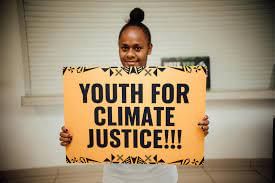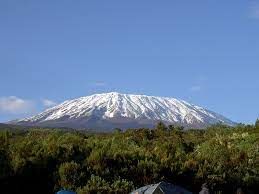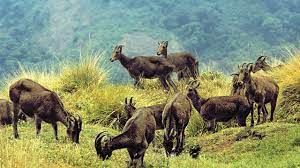UPSC Daily Current Affairs- 3rd April 2023 | Current Affairs & Hindu Analysis: Daily, Weekly & Monthly PDF Download
GS-I
ICJ and Climate Justice

Why in News?
On March 29, the United Nations General Assembly passed a resolution that requested an advisory opinion from the International Court of Justice (ICJ) regarding the obligations countries have towards climate change reduction.
Vanuatu seeks climate reparations
- The resolution, which was passed by consensus, was pushed through by the Pacific Island of Vanuatu, which was devastated by Cyclone Pam in 2015.
- This resolution is significant because it invokes article 96 of the U.N. Charter and seeks to clarify the legal obligations of states to protect the climate system.
Resolution A/77/L.58: What does it seek?
The draft resolution (A/77/L.58) asks the ICJ to deliberate on two questions:
- Obligations of states: Under international law to ensure the protection of the climate system for present and future generations
- Legal consequences: For states that have caused significant harm to the climate system, particularly for Small Island Developing States (SIDS) and for people who are harmed?
Frameworks invoked by Vanuatu
The resolution refers to several international protocols, including the-
- Paris Agreement
- United Nations Convention on the Law of the Sea and
- Universal Declaration of Human Rights
What do sponsors of the resolution want?
- The sponsors of the resolution expect an advisory opinion from the ICJ to bolster the efforts under the global climate pledge.
- The opinion is also expected to clarify more contentious issues, such as-
- Climate reparations by the developed world,
- Legal culpability for countries that don’t achieve their NDC promises
- Climate support to the most vulnerable parts of the world
Where does India stand over this?
- India has been silent about the resolution, although it is generally supportive of climate justice and holding the developed world accountable for global warming.
- India did not co-sponsor the draft resolution, unlike its neighbors Bangladesh, Maldives, Nepal, and Sri Lanka.
If ICJ intervenes, what would change?
- Only advisory opinion: The ICJ is being asked for an advisory opinion, which would not be legally binding as an ICJ judgment.
- Puts moral obligation: The ICJ carries “legal weight and moral authority”.
- Symbolic significance: ICJ’s clarification of international environmental laws would make the process more streamlined, particularly as the COP process looks at various issues like climate finance, climate justice, and the most recently agreed to “loss and damages” etc.
Conclusion
- The resolution passed by the UNGA requesting an advisory opinion from the ICJ is a step in the right direction towards clarifying the legal obligations of states to mitigate climate change and protect the environment for future generations.
- To ensure the success of this effort, countries need to continue to engage in diplomatic efforts and work towards shared goals.
- Countries should also actively participate in the ICJ process and respect the advisory opinion it delivers.
Source: The Hindu
Mount Kilimanjaro

Why in News?
Recently, the Union Information and Broadcasting Minister congratulated Anjali Sharma of Kangra district of Himachal Pradesh for conquering Mount Kilimanjaro in Africa, wearing Luanchari.
About Mount Kilimanjaro:
- Mount Kilimanjaro is Africa’s tallest mountain and the world’s largest free-standing mountain (which means not part of a mountain range) located in
- It has three main volcanic peaks namely: Kibo, Mawenzi, and Shira.
- Amongst these three peaks, Kibo is the tallest of the three volcanic formations which is also a dormant volcano while the other two are extinct volcanoes.
- The mountain is also known for its snow-capped peak.
- The mountain has five main vegetation zones from the lowest to the highest point: Lower slopes, montane forest, heath and moorland, alpine desert and summit.
- The Kilimanjaro National park was named a United Nations Educational, Scientific and Cultural Organization (UNESCO) World Heritage site in 1987.
Key facts about Volcano
- A volcano is an opening in a planet’s crust through which molten rock, hot gases, and other materials erupt.
- Volcanoes often form a hill or mountain as layers of rock and ash build-up from repeated eruptions.
- Volcanoes are classified as
- Active volcanoes: These have a recent history of eruptions; they are likely to erupt again.
- Dormant volcanoes: These have not erupted for a very long time but may erupt at a future time.
- Extinct volcanoes: These are not expected to erupt in the future.
Source: AIR
GS-II
Central Administrative Tribunal (CAT)

Why in News?
A Parliamentary committee recently asked the Central Administrative Tribunal (CAT) to decide on a priority basis the cases pending disposal for more than 10 years.
About Central Administrative Tribunal (CAT):
- The Central Administrative Tribunal (CAT) had been established under Article 323-A of the Constitution.
- Mandate: To adjudicate disputes and complaints with respect to recruitment and conditions of service of persons appointed to public services and posts in connection with the affairs of the Union or other authorities under the control of the Government.
- In addition to the Ministries and Departments of Central Government, the Government has notified about 214 organizations under section 14 (2) of the Administrative Tribunals Act, 1985, to bring them within the jurisdiction of the CAT from time to time.
- There are 17 Benches and 21 Circuit Benches in the CAT all over India.
- Composition: A bench consists of one Judicial Member and one Administrative Member.
- The conditions of service of the Chairman and Members of CAT are the same as applicable to a Judge of High Court.
- Salaries, Allowances and Conditions of Service of the officers and other employees of the Tribunal are specified by the Central Government.
- Powers:
- It exercises jurisdiction only in relation to the service matters of the parties covered by the Administrative Tribunals Act 1985.
- The Tribunal is guided by the principles of natural justice in deciding cases and is not bound by the procedure prescribed by the Civil Procedure Code.
- CAT is empowered to frame its own rules of procedure and practice.
- It has been conferred with the power to exercise the same jurisdiction and authority in respect of contempt of itself as a High Court.
Source: PIB
Autism Spectrum Disorders: Prevalence in India and Way Ahead

Why in News?
In India, the prevalence of autism spectrum disorders (ASD) is a widely debated issue due to a lack of systematic estimates. Most estimates have been derived from studies based on school children, revealing that over one crore Indians may be on the autism spectrum. However, there are notable cultural differences in diagnosing autism between countries, which highlights the need to assess the prevalence of autism spectrum disorders specifically in the Indian context.
What is Autism?
- Spectrum disorder: Autism, also known as Autism Spectrum Disorder (ASD), is a neurodevelopmental disorder that affects communication, social interaction, and behaviour. It is called a spectrum disorder because the symptoms and severity can vary widely between individuals.
- Common symptoms: Some common symptoms of autism include difficulty with social interactions, such as maintaining eye contact or understanding nonverbal cues, delayed speech and language development, repetitive behaviors, and sensory sensitivities.
- Cause: Autism is believed to be caused by a combination of genetic and environmental factors, but the exact cause is not yet fully understood.
- Cure: There is currently no cure for autism, but early interventions and therapies can help individuals with autism lead fulfilling and independent lives.
Prevalence of Autism in India
- Lack of systematic estimates: Autism is a global issue and affects individuals of all cultures, ethnicities, and socioeconomic backgrounds. However, there is a lack of systematic estimates of autism prevalence in India.
- Methos failed: Researchers have attempted to estimate prevalence through government hospitals, but this method failed due to the absence of central medical registries.
- Conservative estimates: As a result, prevalence was estimated through school-based assessments. According to conservative estimates, well over one crore Indians are on the autism spectrum. This highlights the need for further research and attention to address the prevalence of ASD in India.
Cultural Differences and Diagnosis of Autism:
- Notable cultural differences exist in the diagnosis of autism spectrum disorder. In the US and UK, the majority of children with autism spectrum diagnosis are verbal, with average or higher IQ, and attending mainstream schools.
- However, in India, a significant majority of children with a clinical diagnosis of autism also have intellectual disability and limited verbal ability. This difference is driven by sociological factors, such as access to appropriate clinical expertise, provisions for inclusion in mainstream schools, and availability of medical insurance coverage.
Challenges in Assessing Autism
- Assessment tools: Assessment of autism spectrum disorder is primarily behavioral, and most widely used autism assessment tools are not available in Indian languages.
- Indigenous autism assessment tools challenges: There has been a rise in the development of indigenous autism assessment tools. Despite the development of these tools, it can be challenging to compare across different assessment measures.
Demand and Supply in India
- Shortage of mental health professionals: Most autism assessment tools need to be administered by specialist mental health professionals. However, there is a significant shortage of mental health professionals in India, with less than 10,000 psychiatrists, a majority of whom are concentrated in big cities.
- Delay is costly: Delay in interventions can be costly for neurodevelopmental conditions such as autism.
- Demand and supply gap need to be met: This gap between demand and supply cannot be met directly by specialists alone, and parallel efforts to widen the reach of diagnostic and intervention services through involving non-specialists is required. Emerging evidence suggests the feasibility of involving non-specialists in autism identification and intervention through digital technology and training programs.
Way ahead: Need for an All-India Program
- National program on autism: The need of the hour is to develop a national program on autism in India that links researchers, clinicians, service providers to the end-users in the autism community.
- Essential components: This program needs to have three essential components that are joined up: assessment, intervention, and awareness.
- Assessment: Research is needed to develop appropriate assessments and design efficient implementation pathways.
- Intervention: Clinical and support service workforce needs to be expanded by training non-specialists such that a stepped-care model can be rolled out effectively across the nation.
- Awareness: Large-scale initiatives need to be launched to build public awareness that can reduce the stigma associated with autism and related conditions.
Conclusion
There are challenges in diagnosing and assessing autism in India which highlights the need for a comprehensive and coordinated effort to address them. By expanding the clinical and support service workforce, training non-specialists, and developing appropriate assessments and interventions, India can improve outcomes for those on the autism spectrum and reduce the stigma associated with the condition. This national program needs to be informed by consultation with different stakeholders, with a primary focus on end-users within the Indian autism community.
Source: Indian Express
GS-III
Asola Bhatti Wildlife Sanctuary

Why in News?
Officials recently said the forest and wildlife department will develop a second native seeds nursery at the Asola Bhatti Wildlife Sanctuary.
About Asola Bhatti Wildlife Sanctuary:
- Location:
- The sanctuary covering a 32.71 sqkm area on the Southern Delhi Ridge of the Aravalli hill range on the Delhi-Haryana border lies in Southern Delhi and northern parts of Faridabad and Gurugram districts of Haryana state.
- It is also part of the Sariska-Delhi Wildlife Corridor, which runs from the Sariska Tiger Reserve in Rajasthan to Delhi Ridge.
- Vegetation: Dry deciduous,
- Flora: Consists of Prosopis juliflora as the dominant exotic species and Diospyros montana as the dominant native species in the sanctuary.
- Fauna: Golden Jackals, Striped-Hyenas, Indian crested-Porcupines, Civets, Jungle Cats, Snakes, Monitor Lizards, Mongoose etc.
Key Facts about Aravalli Hills:
- It is one of the oldest fold mountains of the world which runs in a southwest direction, starting near Delhi, passing through southern Haryana and Rajasthan, and ending in Gujarat.
- The highest peak is Guru Shikharat 1,722 metres (5,650 ft).
- Three major rivers originate from the Aravali hills, namely Banas, Sahibi and Luni River (which flows into the Rann of Kutch).
Source: The Hindu
India and Malaysia to settle trade in INR
Why in News?
India and Malaysia have agreed to settle their trade in Indian rupees instead of the US dollar.
What is the move?
- The Reserve Bank of India (RBI) had allowed the settlement of international trade in the Indian rupee in July 2022.
- Malaysia was one of the eighteen countries that were permitted to open Special Rupee Vostro Accounts (SRVAs) to settle payments in Indian rupees.
Volume of bilateral trade
- India-Malaysia bilateral trade reached $19.4 billion during 2021-22.
- Malaysia is the third-largest trading partner of India in the ASEAN region, after Singapore and Indonesia, with $30.1 billion and $26.1 billion in bilateral trade with India.
What are Special Rupee Vostro Accounts (SRVAs)?
- SRVAs are a mechanism introduced by the RBI to allow banks from certain countries to open accounts in Indian rupees with Indian banks.
- These accounts can be used to settle trade transactions between the two countries in Indian rupees, instead of using other currencies.
- The aim of this initiative is to facilitate the growth of global trade and to support the interests of the global trading community in Indian rupees.
- The Union Bank of India has become the first bank in India to operationalize this option by opening a SRVA through its corresponding bank in Malaysia – India International Bank of Malaysia.
- Banks from 18 countries so far are allowed by the RBI to open Special Rupee Vostro Accounts (SRVAs) to settle payments in Indian rupees.
Significance of the move
- The move aims to provide better pricing for goods and services traded between the two countries and overcome currency-related obstacles that have affected bilateral trade.
- This shift away from the US dollar signals India’s de-dollarization efforts.
- The decision also comes against the backdrop of ongoing official efforts to safeguard Indian trade from the impact of the Ukraine crisis.
Broader implications
- The sanction on the Russian economy and the ongoing war in Ukraine have made it increasingly difficult to make payments to Russia in US dollars.
- Many countries are exploring alternatives to the US dollar as the dominant reserve currency for international trade.
Source: Indian Express
Eravikulam National Park

Why in News?
According to Eravikulam National Park (ENP) officials, a Fernarium has been established within the park, and this is the first time such a fern collection has been established in the hill station.
About Eravikulam National Park:
- It is situated in the Kannan Devan Hills of the southern Western Ghats of
- This is also the land of “Neelakurinji”, the flower that blooms once in twelve years.
- The Anamudi peak is situated on the southern side of the Park.
- Flora: The major part of the park is covered with rolling grasslands, but several patches of shola forests are also found in the upper part of the valley.
- Fauna: The Nilgiri Tahr, Gaur, Sloth Bear, Nilgiri Langur, Tiger, Leopard, Giant Squirrel and wild dog are common.
What is a Fern?
- Ferns are part of the Epiphytic family. They grow naturally in a soilless condition.
- The plants obtain water and nutrients through leaching from trees.
What are Epiphytes?
- An epiphyte is a plant that does not place roots in the ground to grow but on the surface of other plants.
Source: The Hindu
|
38 videos|5283 docs|1116 tests
|
FAQs on UPSC Daily Current Affairs- 3rd April 2023 - Current Affairs & Hindu Analysis: Daily, Weekly & Monthly
| 1. What are the important subjects covered under GS-I for UPSC exams? |  |
| 2. What is the significance of GS-II in the UPSC exam? |  |
| 3. What are the key areas covered under GS-III for UPSC exams? |  |
| 4. How can I prepare for GS-I effectively for the UPSC exam? |  |
| 5. What is the weightage of GS-II in the UPSC exam? |  |

















